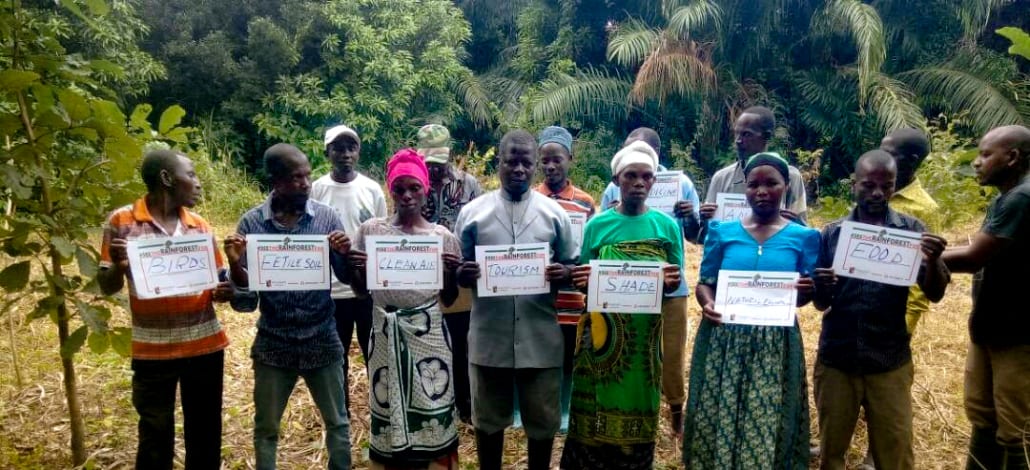Voices from the Rainforest: Herman Michael Lyatuu, Conservation Fellow
Rainforest Trust projects thrive thanks to the important conservation work of people on the ground. Our Voices from the Rainforest series brings you news from our projects in Latin America, Africa, Asia and the Pacific — from the perspectives of those working in and for the rainforests.

Bringing Technology and Conservation Together
Herman Lyatuu, Project Manager for Magombera Nature Reserve, was born in the Kilimanjaro area in northern Tanzania. He currently works with the Tanzanian Forest Conservation Group (TFCG), through their Udzungwa Forest Project partnership with Flamingo Land and Reforest Africa.

Herman (middle) flying a drone during the Partner’s Retreat. Photo by Rainforest Trust.
Why did you become a conservationist?
It started as a seed in my teenage life when I first saw my dad working as a Forester. He had a tree nursery at home that my siblings and I helped him tend after school. He taught me how to germinate and take care of different types of trees, but concentrated on medicinal native plants. My knowledge and interest in conservation then grew as I grew. When I began high school, I decided to take this route professionally, all thanks to inspiration from my dad in my younger years. Now I am working for TFCG and Reforest Africa under the great conservationist and researcher, Dr. Andy Marshall, with donor support from Rainforest Trust and Flamingo Land in the UK. This has given me renewed inspiration.
What inspires you most about being a Conservation Fellow?
Being a Fellow means that I get more exposure, more responsibilities and more accountability in the field of conservation. My understanding in the field of conservation will expand to an international level, including the understanding of internationally employed tools such as Global Positioning Systems, Global Information Systems, and SMART (Spatial Monitoring and Reporting Tool). What I find exciting is that my contribution to conservation is now seen worldwide.
Tell us about a conservation success.
Through conservation education, my team managed to train more than 85% of 10,000 villagers in the use of fuel-efficient stove technology and more than 75% of the villagers are still using the technology. I am also very happy to have been part of a team that upgraded 26km2 (6,424.47 acres) of high biodiversity forest to create the Magombera Nature Forest Reserve. There were so many stakeholders contributing to this effort, but my team was here on the ground to coordinate each activity to see the success of upgrading this mysterious forest first hand.

Herman (far right) working with local villagers. Photo by Tanzanian Forest Conservation Group.
Tell us about a time that you felt you had made a difference as a conservationist.
The first year that I joined the Udzungwa Forest Project, I managed to convince villages around Magombera Forest who are highly in need of dedicated land to participate in tree-planting and conservation efforts. Each village donated one hectare and we managed to plant more than 4,500 native trees. This also required germinating more than 25 native tree species for which germination methods were formerly not documented anywhere.
Tell us about a conservation challenge in your job.
I am working in a village community that depends highly on both natural forest resources and agriculture. Villages like these often seek to expand their farms to get more output because of the increasing population. They do not use the modern way of cultivation. This also leads to frequent encroachment, firewood collection, and poaching within nearby forests.
Despite challenges, Herman remains passionate about conservation because,When we lose our natural resources, we lost our identity, culture and future. When we serve the environment, we serve ourselves, species and the world at large.”
Header image: Magombera Nature Reserve. Photo by Tanzanian Forest Conservation Group.





